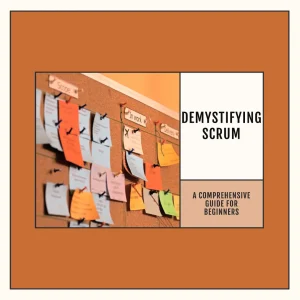Introduction
Picture this: you’re about to embark on an exciting new project, but you quickly realize that managing timelines, resources, and deliverables is no small feat. Trust me, I’ve been there! As a seasoned project manager, I know just how crucial it is to have a solid project schedule in place. It can make or break your project’s success.
In this post, we’ll dive into the fascinating world of project schedules, exploring the three main types and their respective roles in effective project management. But before we go any further, let’s establish why project schedules matter so much.
A well-structured project schedule is the backbone of any successful project. It serves as a roadmap, guiding you and your team through each phase of the project. It helps you allocate resources, establish priorities, and coordinate the efforts of your team members, ensuring everyone is on the same page. In short, a project schedule is the glue that holds everything together.
Now that we’ve established the importance of project schedules, let’s take a sneak peek at the three main types we’ll be discussing in this blog post:
- Master Project Schedule (MPS)
- Milestone Schedule
- Detailed Project Schedule
Each of these types has its own unique strengths and weaknesses, and knowing when to use each one is essential for effective project management. So buckle up, and let’s get started on our journey to decode the three main types of project schedules!
II. Master Project Schedule (MPS)
Let me share a story from my early days as a project manager. I was leading a complex project that involved multiple teams, and I quickly realized that keeping track of everything was becoming a herculean task. That’s when I discovered the lifesaver that is the Master Project Schedule (MPS).
A. Definition and purpose of the Master Project Schedule
The Master Project Schedule is like the 30,000-foot view of your project. It’s a high-level, comprehensive timeline that outlines the major phases, deliverables, and dependencies within the project. The primary purpose of an MPS is to give you, your team, and stakeholders a clear and concise overview of how the entire project will unfold.
B. Key components of an MPS
An effective MPS typically includes the following key components:
- Project phases: These are the major stages in the project, such as planning, execution, and closure.
- Major deliverables: The primary outputs or outcomes expected at the end of each phase.
- Dependencies: The relationships between tasks and deliverables, indicating which must be completed before others can begin.
- Key milestones: Significant events or accomplishments that serve as progress markers throughout the project.
C. Benefits and limitations of using an MPS
The MPS offers several benefits:
- It provides a big-picture perspective, making it easier to communicate the overall project plan to stakeholders.
- It helps identify potential bottlenecks or resource conflicts early on.
- It allows you to track and monitor progress against the overall project timeline.
However, it’s important to be aware of the limitations of an MPS:
- It doesn’t include the granular details of individual tasks or assignments.
- It may not be suitable for smaller projects that don’t require a high-level overview.
D. When to use a Master Project Schedule
You’ll find an MPS particularly useful when managing large, complex projects that involve multiple teams or departments. It’s also handy when you need to present the project plan to stakeholders who may not be interested in the nitty-gritty details but still want to grasp the overall project structure.
In summary, the Master Project Schedule is your go-to tool when you need a birds-eye view of your project. It’s like the map that gives you the lay of the land, helping you navigate through the sometimes-treacherous terrain of project management. In the next section, we’ll dive into the world of Milestone Schedules, where we’ll focus on those crucial progress markers that keep your project on track.
III. Milestone Schedule
You’ve probably experienced the satisfaction of crossing off a task on your to-do list. Now, imagine the joy of doing that for your entire project team! That’s precisely the power of Milestone Schedules. These schedules are all about celebrating the small victories on your journey to project success.
A. Definition and purpose of a Milestone Schedule
A Milestone Schedule is a project management tool that focuses on key events, accomplishments, or deadlines throughout the project. Think of it as a series of checkpoints that help you and your team measure progress and ensure you’re on the right track.
Milestones are like lighthouses guiding your project through the sometimes-stormy waters of project management. They offer your team a sense of achievement and motivation, and they help you assess whether you’re on schedule to meet your project goals.
B. How to create a Milestone Schedule
Creating a Milestone Schedule involves the following steps:
- Identify your project milestones: These are significant events or accomplishments that signal progress, such as completing a project phase or reaching a major deliverable.
- Set target dates: Assign a deadline for each milestone, keeping in mind any dependencies or constraints.
- Prioritize milestones: Rank your milestones in order of importance, considering their impact on the project’s overall success.
- Visualize the schedule: Use a Gantt chart, timeline, or other visual representation to illustrate your Milestone Schedule, making it easy for your team and stakeholders to grasp.
C. Benefits and limitations of using a Milestone Schedule
Milestone Schedules come with several advantages:
- They help keep your team focused and motivated by providing a clear roadmap to project success.
- They allow you to track progress and ensure you’re on schedule.
- They can be easily communicated to stakeholders, helping to manage expectations and maintain transparency.
However, Milestone Schedules do have their limitations:
- They don’t provide a detailed view of individual tasks, making it difficult to allocate resources and manage workload.
- They may not be suitable for smaller projects with few milestones or for projects where the emphasis is on day-to-day activities rather than major accomplishments.
D. When to use a Milestone Schedule
Milestone Schedules are ideal for projects with clear, significant milestones that can be easily communicated and celebrated. They’re especially useful when you need to keep your team focused on the big picture and motivated to achieve their goals.
In conclusion, Milestone Schedules are your project’s cheerleaders, encouraging your team to keep pushing forward and celebrating their achievements along the way. Now that we’ve covered both the birds-eye view of the Master Project Schedule and the motivating Milestone Schedule, it’s time to delve into the nitty-gritty world of Detailed Project Schedules. Stay tuned!
IV. Detailed Project Schedule
Let’s get up close and personal with your project, shall we? While the Master Project Schedule and Milestone Schedule provide a high-level view and focus on key accomplishments, the Detailed Project Schedule is all about diving deep into the day-to-day tasks that bring your project to life.
A. Definition and purpose of a Detailed Project Schedule
A Detailed Project Schedule is like the microscope of project management. It’s a comprehensive, task-oriented timeline that outlines every activity, assignment, and resource required to complete your project successfully. The primary purpose of a Detailed Project Schedule is to help you manage workload, allocate resources efficiently, and ensure that everyone on your team knows their responsibilities and deadlines.
B. Components of a Detailed Project Schedule
A robust Detailed Project Schedule typically includes the following elements:
- Tasks: A list of all the activities required to complete the project.
- Dependencies: The relationships between tasks, showing which tasks need to be completed before others can begin.
- Duration: The estimated time required to complete each task.
- Start and end dates: The planned dates for each task’s commencement and completion.
- Resources: The people, equipment, or materials assigned to each task.
- Progress tracking: A method for monitoring the status and completion of tasks throughout the project.
C. Benefits and limitations of using a Detailed Project Schedule
The benefits of using a Detailed Project Schedule are plentiful:
- It provides a clear understanding of each team member’s responsibilities and deadlines.
- It helps you allocate resources efficiently and manage workload effectively.
- It enables you to track progress and adjust the schedule as needed to keep the project on track.
However, there are also some limitations to be aware of:
- Creating and maintaining a Detailed Project Schedule can be time-consuming.
- It may overwhelm stakeholders who are more interested in high-level overviews than granular details.
D. When to use a Detailed Project Schedule
Detailed Project Schedules are most suitable for projects that require close attention to detail and task management. They’re especially beneficial when working with large teams or managing projects with numerous tasks and dependencies.
In a nutshell, the Detailed Project Schedule is your project management magnifying glass, revealing every intricate detail of your project’s tasks and progress. With this tool in your project management arsenal, you’ll be well-equipped to steer your project toward success. In the next section, we’ll discuss how to choose the right type of project schedule for your unique project needs. Stay tuned!
V. How to choose the right type of project schedule
By now, you might be wondering which type of project schedule is the best fit for your project. I’ve faced the same conundrum countless times, and I’m here to help you navigate this decision-making process. The key is to assess your project’s unique characteristics and align them with the right project schedule.
A. Assessing project complexity and size
The first step in selecting the right project schedule is to evaluate the complexity and size of your project. For large, intricate projects with multiple teams, a Master Project Schedule is essential to provide a high-level overview. On the other hand, smaller projects with fewer tasks and stakeholders may only require a Detailed Project Schedule to manage day-to-day activities effectively.
B. Understanding project stakeholders’ needs and preferences
Your stakeholders play a crucial role in your project’s success, so it’s essential to consider their needs and preferences when choosing a project schedule. If your stakeholders prefer a big-picture view of the project, a Master Project Schedule or Milestone Schedule might be more appropriate. However, if they’re interested in the nitty-gritty details of individual tasks, a Detailed Project Schedule will better meet their expectations.
C. Balancing time and resource constraints
Time and resources are often limited in project management, so it’s vital to choose a project schedule that efficiently allocates both. A Master Project Schedule is excellent for identifying potential bottlenecks and resource conflicts early on, while a Detailed Project Schedule helps you manage workload and allocate resources at the task level.
In conclusion, there’s no one-size-fits-all solution when it comes to project schedules. The key is to analyze your project’s unique characteristics and align them with the appropriate type of schedule. Once you’ve done that, you’re well on your way to managing your project like a pro.
In the next section, we’ll discuss the importance of integrating the three types of project schedules for comprehensive project management. Don’t miss it!
VI. Integrating the three types of project schedules
In my years of project management experience, I’ve found that the most effective approach often involves integrating the three types of project schedules. By combining the strengths of Master Project Schedules, Milestone Schedules, and Detailed Project Schedules, you can create a comprehensive, cohesive plan that ensures project success.
A. The importance of maintaining consistency across schedules
One of the biggest challenges in project management is maintaining consistency across various schedules. It’s essential to ensure that your Master Project Schedule, Milestone Schedule, and Detailed Project Schedule all align and support each other. This consistency not only helps you manage your project more effectively but also provides a seamless experience for your team and stakeholders.
B. How to effectively combine different types of schedules for comprehensive project management
Here are some practical tips for integrating the three types of project schedules:
- Start with the big picture: Develop a Master Project Schedule to outline the major phases, deliverables, and dependencies of your project. This high-level view will serve as a foundation for your more detailed schedules.
- Break it down: Next, create a Milestone Schedule to identify and prioritize the key milestones that signify progress toward your project goals. This schedule will help you and your team stay focused on the most critical aspects of the project.
- Dive into the details: Finally, develop a Detailed Project Schedule that outlines every task, resource, and deadline. This granular view will help you manage workload, allocate resources, and ensure everyone on your team knows their responsibilities.
- Align and adjust: Regularly review and update your schedules to ensure they remain consistent and aligned with your project goals. As your project progresses, you may need to make adjustments to account for changes in scope, resources, or deadlines.
- Communicate clearly: Keep your team and stakeholders informed about the different schedules and how they relate to one another. Clear communication is vital for maintaining alignment and managing expectations.
By integrating the three types of project schedules, you’ll be better equipped to manage every aspect of your project, from the big-picture overview to the granular details of individual tasks. This comprehensive approach will help you stay on track, maintain consistency, and ultimately achieve project success.
In the next and final section, we’ll wrap up our discussion and recap the three main types of project schedules. Stay tuned!
VII. Conclusion and recap
As we come to the end of our journey through the world of project schedules, I hope you’ve gained a deeper understanding of these essential tools and how they can elevate your project management game. Let’s take a moment to recap the three main types of project schedules and their roles in effective project management.
- Master Project Schedule (MPS): The birds-eye view of your project, providing a high-level overview of the major phases, deliverables, and dependencies. The MPS is ideal for managing large, complex projects and keeping stakeholders informed about the overall project structure.
- Milestone Schedule: The cheerleader of your project, focusing on key events and accomplishments that serve as progress markers. Milestone Schedules are perfect for keeping your team motivated and ensuring you’re on track to meet your project goals.
- Detailed Project Schedule: The magnifying glass of project management, outlining every task, assignment, and resource required to complete your project successfully. Detailed Project Schedules are indispensable for managing workload, allocating resources, and keeping your team on track with their responsibilities and deadlines.
Remember, the key to choosing the right type of project schedule lies in understanding your project’s unique characteristics, considering stakeholder preferences, and balancing time and resource constraints. And don’t forget the power of integrating the different types of schedules to create a comprehensive project management plan.
As a seasoned project manager, I can’t emphasize enough the importance of a well-structured project schedule. It’s the glue that holds your project together, the roadmap that guides your team to success, and the foundation upon which your project’s triumph is built. So go forth, armed with the knowledge of the three main types of project schedules, and conquer the world of project management!
To find out how Artificial Intelligence is changing the Project Management landscape, you have enjoy reading this article https://www.shaunstoltz.com/did-artificial-intelligence-just-change-everything-about-project-management/
Find out more about Shaun Stoltz https://www.shaunstoltz.com/about/
This post was written by an AI and reviewed/edited by a human.



